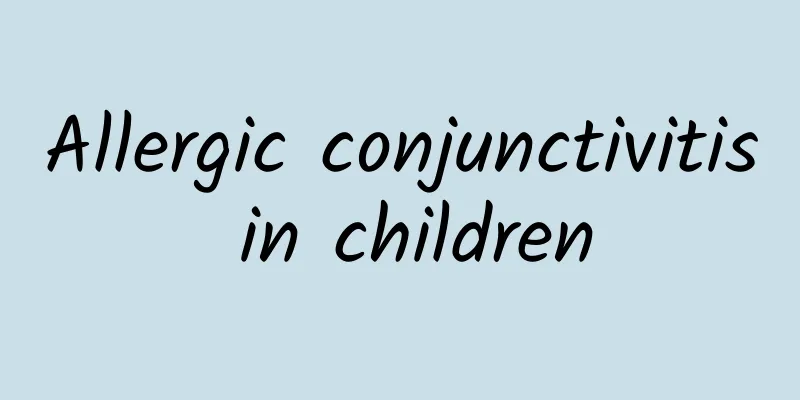What are the dangers of high bile in children?

|
If a child has high jaundice, he or she should be treated in time. There are many reasons for high jaundice in children. For newborns, it is mainly because of excessive bilirubin. In addition, the child's liver and gallbladder function is not particularly perfect, and the enterohepatic circulation will cause high bilirubin. At this time, jaundice will occur. Jaundice is divided into physiological jaundice and pathological jaundice. Pathological jaundice should be treated in time. What are the dangers of high bile in children? The jaundice caused by excessive bilirubin production, immature liver function and enterohepatic circulation in newborns, which leads to increased bilirubin concentration, is clinically called physiological jaundice. Physiological jaundice of full-term infants appears on the 2nd to 3rd day. At this time, the skin is light yellow, the sclera (white of the eye) is mainly blue with a slight yellow tint, the urine is slightly yellow, and the general condition is good. It reaches its peak on the 4th to 5th day and disappears in the 1st to 2nd week. Liver function examination is normal and serum unconjugated bilirubin is increased. Physiological jaundice in premature infants will appear earlier, be higher, and last longer, but it usually disappears within four weeks after birth. The causes of pathological jaundice include hemolysis, severe infection, neonatal hepatitis, biliary atresia and metabolic diseases. Regardless of the cause, jaundice can cause "kernicterus" in severe cases, which has a poor prognosis. In addition to causing damage to the nervous system, severe cases can even cause death. Etiological analysis of pathological jaundice, early relevant examinations and clinical observations of neonatal jaundice, strengthening neonatal bilirubin monitoring, early detection of the cause, and causal treatment can effectively reduce the damage of bilirubin encephalopathy to the central nervous system and are the key to reducing the mortality and disability rates of neonatal bilirubin encephalopathy. Mild jaundice in early neonates will not have serious consequences, but severe jaundice in early neonates can cause bilirubin encephalopathy (kernicterus). Kernicterus is not only life-threatening, but survivors may suffer lifelong disability due to damage to the nervous system. Multicenter studies in recent years have shown that moderate and severe neonatal hyperbilirubinemia can cause hearing damage and abnormal brainstem auditory evoked potentials. Therefore, dynamic monitoring of bilirubin levels and brainstem auditory evoked potential testing should be performed in children with jaundice at an early stage.How to care for a baby with jaundice 1. Determine the degree of jaundice. Parents can observe the degree of yellowing of the newborn's skin under natural light. If only the face is yellow, it is mild jaundice; if the skin on the trunk is yellow, it is moderate jaundice; if the limbs and the palms and soles of the feet are also yellow, it is severe jaundice. 2. Observe the color of stool. If the stool is clay-colored, pathological jaundice should be considered, which is mostly caused by congenital bile duct malformations. If the jaundice is severe, associated symptoms occur, or the stool color is abnormal, you should go to the hospital immediately to avoid delaying treatment. 3. Expel meconium as soon as possible. Because meconium contains a lot of bilirubin, if the meconium is not completely discharged, the bilirubin will be reabsorbed into the blood through the special enterohepatic circulation of the newborn, causing jaundice to increase. 4. Give the newborn plenty of water. Too little urination is not conducive to the excretion of bilirubin. 5. During the jaundice period, pay attention to providing enough sugar water and heat, and protect the liver. 6. If jaundice appears too early or disappears too late, or the jaundice is too severe, or it gradually improves and then worsens again, and if the baby has clinical symptoms such as poor spirits, less milk sucking or refusal to feed, it is pathological jaundice and you should go to the hospital for diagnosis and treatment in time. |
<<: How to correct flat feet in children
>>: Why do children fart a lot?
Recommend
Be sure to pay attention! The more you tolerate hemorrhoids, the greater the harm!
Everyone knows that hemorrhoid surgery will cause...
What can't people with vitiligo eat?
After suffering from vitiligo, you must pay atten...
Lenalidomide instructions
Lenalidomide is mainly used to treat inherited my...
What to do if you have toothache during the fourth month of pregnancy
Pregnant women are a very special group. There wi...
What should not be eaten for convex meningioma of the brain
When it comes to the question of what not to eat ...
What are the early symptoms of onychomycosis?
If you want to know whether you have onychomycosi...
What are the early symptoms of gallstones?
Gallstones are also a common disease in life. Whe...
What is the cause of small pimples on my hands?
Perhaps many people have this situation, that is,...
What to do if the six hormone tests are abnormal
The six-item hormone test is a common gynecologic...
What causes laryngitis? What should I do if I have pharyngitis?
There are two types of pharyngitis: acute and chr...
How to treat boils
What people call boils in daily life are medicall...
Why do my legs swell every day?
Leg swelling usually refers to swelling of the ca...
How to replenish the body during confinement
Pregnant women are often weak after giving birth,...
Huoxiang Zhengqi Oral Liquid is really magical
After the rain in Qingdao, the temperature quickl...
Locating the insomnia point on the ear
Nowadays, people often suffer from insomnia due t...









